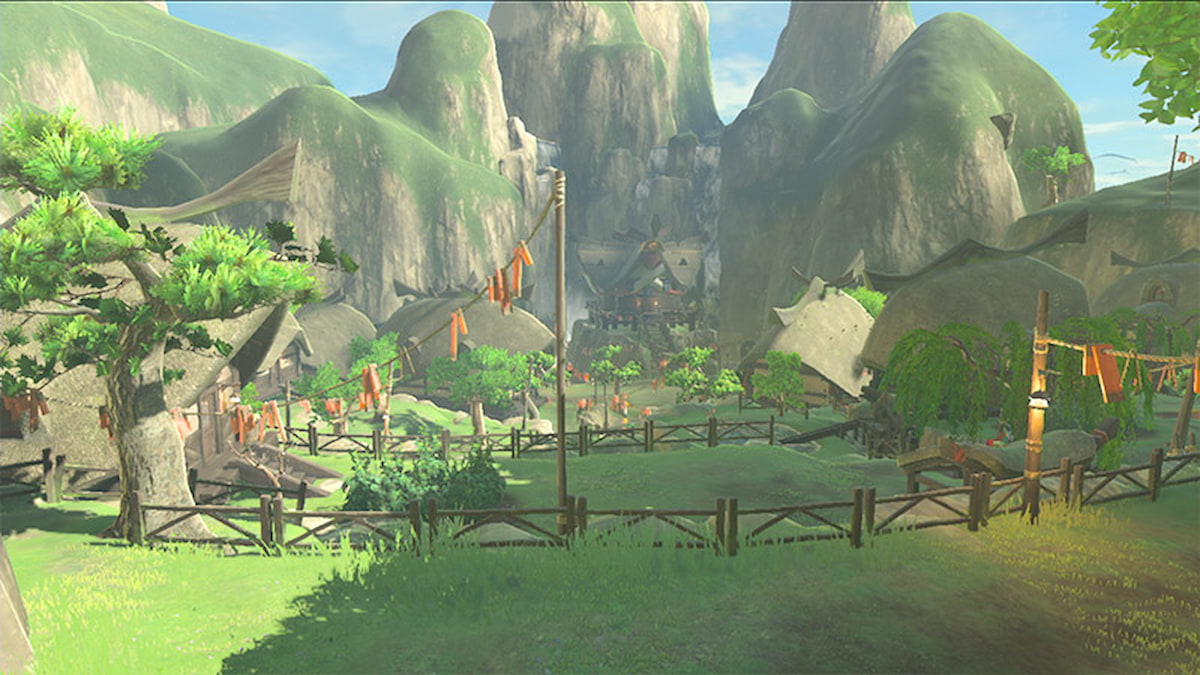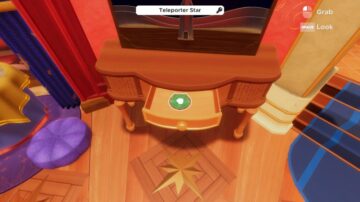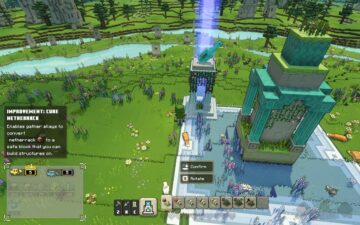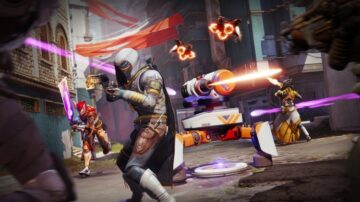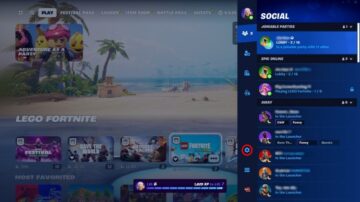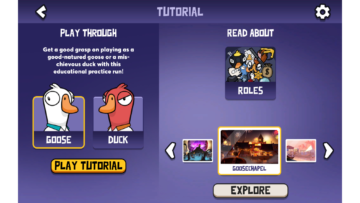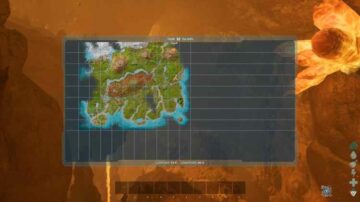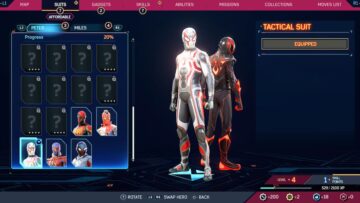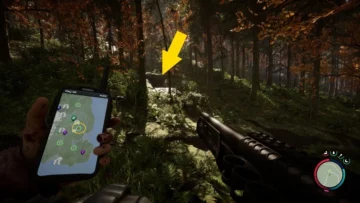Now that the gaming public has had plenty of time to thoroughly explore The Legend of Zelda: Tears of the Kingdom, it seems safe to say that it improves upon its predecessor, Breath of the Wild, quite substantially. New abilities like Ultrahand as well as the expanded scope of the world have proven so successful that it will no doubt feel strange to play Breath of the Wild without them. In fact, some have even gone as far as to say that these improvements have eliminated any reason for them to go back to Breath of the Wild.
But while I understand the sentiment, I don’t necessarily feel the same way. Breath of the Wild still has a number of aspects that make it uniquely appealing compared to its sequel, whether they be interesting features found only in Breath of the Wild or elements that are done outright better here. So if you recently played through Tears of the Kingdom and have struggled to come up with reasons to return to Breath of the Wild, here are a few to consider.
What to look forward to when replaying Breath of the Wild
Sheikah Slate Runes
The core abilities handed to you at the start of Tears of the Kingdom, namely Ultrahand, Fuse, Ascend, and Recall, are all key to Tears of the Kingdom’s consistently rewarding and dynamic exploration. But of course, those who played Breath of the Wild know that these new abilities replace that game’s Sheikah Slate runes: Magnesis, Stasis, Remote Bombs, and Cryonis. These powers don’t appear in the sequel at all, effectively giving both games their own unique brand of interactions and exploration.
It is true that Breath of the Wild’s powers have more situational uses compared to the more all-encompassing abilities from Tears of the Kingdom. Additionally, the sequel does a lot to fill in the void left behind by the absence of the Sheikah Slate Runes. For instance, Ultrahand essentially functions as an improved version of Magnesis, and Bomb Flowers fulfill the same role that Remote Bombs did.
Having said that, Breath of the Wild’s powers still allow for plenty of fun interactions that are absent in the sequel, or at least more difficult to replicate. Building up momentum on an object with Stasis before launching it at high speeds is still incredibly novel, and even more subtle nuances, such as the superior maneuverability of carrying objects with Magnesis compared to Ultrahand, give the older powers valuable utility that the new ones can’t quite replicate. As long as you can get used to the Sheikah Slate runes’ more restrictive use cases, there’s still a great deal of fun to be had with them.
A Less Overwhelming Hyrule
Tears of the Kingdom boasts one of the largest, densest game worlds to ever exist, and while that’s a huge point in its favor, it does come with at least one drawback. Breath of the Wild already had a wealth of content to explore, but with so much more added on top of that, Tears of the Kingdom can easily become overwhelming.
It feels like every few steps will lead to an enemy camp, a Korok seed, an Addison sign, a cave, or some other distraction, and it gets to the point where I have to actively avoid some of this content to finish the main quests with anything resembling efficiency. And thanks to the addition of the sky islands and the Depths, that overwhelming feeling is compounded even further.
By comparison, although Breath of the Wild’s Hyrule could hardly be considered compact, it at least feels a bit more controlled. With a more limited number of activities to get distracted by, there is a stronger likelihood that you’ll cover more of the map at a brisker pace. To be clear, that feeling of having almost too much to do in Tears of the Kingdom certainly has its own thrilling appeal. But those looking for a more balanced distribution of content and greater ease of replayability might want to give Breath of the Wild another shot.
Unique Enemies
Being a direct sequel using most of the same assets as Breath of the Wild, Tears of the Kingdom carries over almost every enemy introduced in its predecessor. While this does leave Breath of the Wild with relatively few encounters it can call its own, it does have one major class of enemies that, so far, remain completely absent in the sequel: the Guardians. These Sheikah robots that have largely been taken over by Calamity Ganon became incredibly iconic enemies in their own right thanks to their anxiety-inducing nature.
In the early game, the lasers that the Guardians fire out can kill Link in a single shot, and they will likely hit you even if you sprint away well in advance. This makes encounters with them incredibly tense as you try and stay out of their line of sight while their frantic theme music plays in the background. On the other hand, once you gain both the power and confidence to confront them head-on, it’s a remarkably satisfying feeling, particularly if you choose to reflect their lasers back at them with a well-timed shield parry. No enemy in Tears of the Kingdom has this unique parry interaction, and the Guardians feel all the more special for it.
Despite how strong the standard Guardians are as enemies, they admittedly don’t make for compelling tests of your swordplay skills. Fortunately, the Guardian Scout enemies do a lot to compensate for this, as they all boast extensive movesets that encourage proficiency with the core combat mechanics and dynamically evolve over the course of their encounters to keep you on your toes. Although an unfortunately large percentage of the shrine content in Breath of the Wild is taken up by these encounters, they still manage to impress on their own.
More Combat-Focused Bosses
This one’s a bit more contentious, as the major story bosses are one of the most frequently criticized aspects of Breath of the Wild. Of course, it’s not without good reason; since they share similar, often outright identical visual designs, they don’t stick in the memory as many of the bosses in past Zelda games do. It doesn’t help that these fights often don’t demand much from the player mechanically, as landing headshots on them often proved a little too effective. The visual and mechanical variety of the bosses is something that Tears of the Kingdom really strove to improve on, and I’d say it definitely succeeded overall.
Having said that, Breath of the Wild’s bosses have a notable edge in that they take fuller advantage of the core combat mechanics. Bosses usually boast close-range melee strikes that encourage the use of flurry rushes and parries, the latter of which can also often be used to reflect their projectiles back at them. Thunderblight Ganon does a particularly effective job at testing players’ ability to dodge and parry at the right time thanks to its blindingly fast strikes.
By contrast, Tears of the Kingdom’s bosses put much less emphasis on the core defensive aspects of the combat system. Parrying tends to prove fairly impractical for most boss attacks, and the fights often make it impossible to use flurry rushes at all. In fact, the only newly added bosses in Tears of the Kingdom that allow for flurry rushes are Ganondorf, Phantom Ganon, and, to a lesser extent, the Seized Construct and the last Master Kohga battle. This doesn’t make Tears of the Kingdom’s fights inherently worse, but the ones from its predecessor allow these mechanics to shine much more often, providing a compelling reason to return to this boss lineup.
Divine Beast Dungeons
Like with the bosses, this is another controversial topic. Many classic Zelda fans have expressed disappointment with the Divine Beasts in Breath of the Wild, seeing them as poor substitutes for the dungeons of old. In many ways, I agree with this sentiment. The sectioned-off puzzle areas in the Divine Beasts don’t come anywhere close to the multilayered puzzles and structures of some of the best Zelda dungeons, and their short length means that they don’t get the time they need to fully explore their concepts. Making matters worse, from a visual perspective, the Divine Beasts all share the same design motif, which quickly leads to a feeling of repetition.
Despite this, though, they boast some undeniable strengths that did a lot to offset these flaws. The scale of these locations is nothing short of impressive; navigating through massive ancient mechanized beasts as they soar through the skies or stomp through the desert makes for remarkably memorable setpieces, and their unique mechanics, which see you manipulating the Beasts’ positioning or parts of their structure, contributed to this sense of scale even further.
The same and more can be said regarding the action sequences that take place before you enter the Divine Beasts. Although these aren’t really classified as boss encounters, they more or less play out like one regardless. This aspect of them really made them stand out, and the variety of visual and mechanical spectacles they offered went some way toward making up for the relative sameyness of the bosses fought within the Divine Beasts. Elements like these allow the Divine Beasts to contrast well with the slightly more traditional dungeons of Tears of the Kingdom, making them well-worth remembering.
More Intuitive Champion Abilities
If fans and detractors of Tears of the Kingdom agree on one thing, it’s that the sage abilities you unlock in every dungeon are incredibly flawed in how they’re implemented. The usefulness of these abilities can vary, but the real problem lies in the fact that to activate them in most cases, you have to physically make your way to the sage avatars while they’re out on the field and press the A button. Not only does the button mapping overlap with other important functions, such as picking up items, but more importantly, the abilities’ activation is inherently unpredictable due to the avatars’ AI-controlled nature. It’s impossible not to stumble into some kind of frustrating occurrence with this system, and one can’t help but wish there was some way the developers could have streamlined it.
Interestingly, though, a more streamlined implementation already exists in Tears of the Kingdom’s own predecessor. Breath of the Wild’s equivalent champion abilities are all activated through context-sensitive actions that are straightforward and consistent to perform. Mipha’s Grace automatically triggers when you run out of health, Revali’s Gale is performed by holding down the jump button, Daruk’s Protection remains passively active as long as you hold the shield button, and Urbosa’s Fury is tied to your weapons’ charge attacks.
Although these abilities all have a much, much longer cooldown than Tears of the Kingdom’s sage abilities due to how powerful they are, their simple activation methods alone give them a significant advantage over their future equivalents. And since the champion abilities are entirely unique to Breath of the Wild, they provide yet another incentive to boot the game up again from time to time.
One-Off Moments and Quests
Outside of the more important aspects of the game, Breath of the Wild is also home to a host of unique quests and moments that at least one player will have some kind of reaction to. A strong example that many fans point to is the Tarrey Town quest, which sees players building a humble community from the ground up. The sense of progression that comes with bringing in a new resident or establishing a new house is unrivaled throughout the whole game, and it’s backed up by a powerful message about finding hope for a better future in the wake of overwhelming tragedy. It’s worth noting that Tears of the Kingdom followed up on this side story beautifully with its own Tarrey Town questline. But of course, that wouldn’t have been possible without Breath of the Wild’s quest to set the groundwork.
Another noteworthy moment comes upon meeting the Satori, also known as the Lord of the Mountain. At random points, if you look over to the top of Satori Mountain, you will occasionally see a mysterious blue glow emanating from it. Heading over to the mountain during these times will allow you to see the mystical Satori and even ride it if you have enough stamina. The Satori itself has infinite stamina, but since you can’t register it at a stable and usually disappear the moment you dismount, it exists purely for the sake of providing a unique experience rather than offering any substantial utility.
Tears of the Kingdom brings back the Satori for a different role, but its appearance in Breath of the Wild is by far the more memorable one. And there exist several other distinct scenarios worth replaying, more than you might remember.
The Final Trek up Hyrule Castle
Although the last phase of Breath of the Wild’s final boss leaves a lot to be desired, the same cannot be said of the final dungeon that precedes it. Breath of the Wild’s Hyrule Castle stands out as easily the best final dungeon to ever grace a Zelda game, offering a mechanical and narrative climax like no other. Tears of the Kingdom’s last trek in the depths beneath Hyrule Castle turned out incredibly strong in its own right, and the game’s brief dungeon segment within Hyrule Castle proper had plenty to enjoy as well. But if you ask me, the predecessor’s version of Hyrule Castle sits in a league of its own.
It’s true that, with the right tools and upgrades, you can skip right to the end of the Hyrule Castle segment in no time flat. But if you choose to explore it, you’ll be treated to an absolutely sprawling final area chock full of distinct rooms, challenging encounters, and secrets.
You can find nearly every kind of high-level enemy and miniboss as well as a heap of Guardians that can easily catch you with a laser beam without careful navigation. Any search for a valuable item, whether that be a powerful weapon or the ultra-rare Hylian Shield, will likely take you through substantial journeys through multiple rooms filled with small discoveries of their own, including hidden diaries that further flesh out the world and characters. It’s only appropriate that a massive open-world game has you explore a substantial, fully-realized location for its final area, and Breath of the Wild more than delivers in this regard.
Breath of the Wild remains a classic
Note that this is not meant to imply anything about whether or not Breath of the Wild is better than Tears of the Kingdom. Ultimately, this is the important takeaway: even with all of the additions and improvements Tears of the Kingdom brings to the table, Breath of the Wild is still worth experiencing. If you go back to the game after your latest session with the sequel, you may find yourself surprised to discover that many aspects of it still hold up extremely well, maybe even better than you might remember. Both games make for great companion pieces with each other, as they excel uniquely in their own respects. The sequel may have pushed boundaries in many ways, but it’s valuable to experience how it all started.
- SEO Powered Content & PR Distribution. Get Amplified Today.
- PlatoData.Network Vertical Generative Ai. Empower Yourself. Access Here.
- PlatoAiStream. Web3 Intelligence. Knowledge Amplified. Access Here.
- PlatoESG. Automotive / EVs, Carbon, CleanTech, Energy, Environment, Solar, Waste Management. Access Here.
- BlockOffsets. Modernizing Environmental Offset Ownership. Access Here.
- Source: https://www.pcinvasion.com/breath-wild-over-tears-of-the-kingdom/
- :has
- :is
- :not
- :where
- $UP
- 1
- a
- abilities
- ability
- About
- absent
- absolutely
- Action
- actions
- activated
- Activation
- active
- actively
- activities
- added
- addition
- Additionally
- additions
- advance
- ADvantage
- After
- again
- All
- allow
- alone
- already
- also
- Although
- an
- Ancient
- and
- Another
- any
- anything
- anywhere
- appeal
- appealing
- appear
- appropriate
- ARE
- AREA
- areas
- AS
- ascend
- aspect
- aspects
- Assets
- At
- Attacks
- automatically
- Avatars
- avoid
- away
- back
- backed
- background
- balanced
- Battle
- BE
- Beam
- beautifully
- became
- become
- been
- before
- behind
- BEST
- Better
- Bit
- Blue
- bomb
- BOSS
- bosses
- both
- boundaries
- brand
- Breath
- Bringing
- Building
- but
- button
- by
- call
- Camp
- CAN
- Can Get
- cannot
- careful
- carrying
- cases
- Catch
- Center
- challenging
- champion
- characters
- charge
- Choose
- class
- classic
- classified
- clear
- Close
- combat
- come
- comes
- community
- companion
- compared
- comparison
- compelling
- completely
- concepts
- confidence
- Consider
- considered
- consistent
- construct
- content
- contrast
- contributed
- controlled
- controversial
- Core
- could
- course
- cover
- deal
- defensive
- definitely
- delivers
- Demand
- Depths
- DESERT
- Design
- designs
- desired
- developers
- DID
- different
- difficult
- direct
- disappear
- disappointment
- discover
- distinct
- distribution
- do
- Dodge
- does
- Doesn’t
- done
- Dont
- doubt
- down
- due
- during
- dynamic
- dynamically
- each
- Early
- ease
- easily
- Edge
- Effective
- effectively
- efficiency
- Eighth
- elements
- eliminated
- emphasis
- encourage
- end
- enemies
- enjoy
- enough
- Enter
- entirely
- equivalents
- essentially
- establishing
- Even
- EVER
- Every
- evolve
- example
- Excel
- exist
- exists
- expanded
- experience
- experiencing
- exploration
- explore
- expressed
- extensive
- extent
- extremely
- fact
- fairly
- fans
- far
- FAST
- favor
- Features
- feel
- few
- field
- fights
- fill
- filled
- final
- Find
- finding
- finish
- Fire
- flat
- flawed
- flaws
- For
- Fortunately
- Forward
- found
- frequently
- from
- frustrating
- Fulfill
- full
- Fuller
- fully
- fun
- functions
- further
- future
- Gain
- game
- Games
- gaming
- get
- Give
- Giving
- Go
- gone
- good
- great
- greater
- Ground
- groundwork
- guardian
- Guardians
- had
- hand
- Have
- having
- Heading
- Health
- help
- here
- Hidden
- High
- high-level
- Hit
- hold
- holding
- Home
- hope
- host
- House
- How
- HTTPS
- huge
- i
- iconic
- identical
- if
- implementation
- implemented
- important
- impossible
- impressive
- improve
- improved
- improvements
- improves
- in
- Incentive
- Including
- incredibly
- inherently
- instance
- interaction
- interactions
- interesting
- into
- introduced
- intuitive
- Islands
- IT
- items
- ITS
- itself
- Job
- Journeys
- jpg
- jump
- Keep
- Key
- Kill
- Kind
- Kingdom
- known
- landing
- large
- largely
- largest
- laser
- lasers
- Last
- latest
- launching
- lead
- Leads
- League
- least
- left
- Length
- less
- lesser
- lies
- like
- likelihood
- likely
- Limited
- Line
- lineup
- LINK
- little
- location
- locations
- Long
- longer
- Look
- looking
- Lot
- made
- Main
- major
- make
- MAKES
- Making
- manage
- manipulating
- many
- map
- mapping
- massive
- master
- Matters
- May..
- maybe
- me
- means
- meant
- mechanical
- mechanics
- meeting
- memorable
- Memory
- message
- methods
- might
- moment
- Moments
- Momentum
- more
- most
- Mountain
- much
- MultiLayered
- multiple
- Music
- mysterious
- namely
- NARRATIVE
- Nature
- navigating
- Navigation
- nearly
- necessarily
- Need
- New
- newly
- Nintendo
- no
- notable
- noteworthy
- nothing
- noting
- novel
- number
- object
- objects
- occasionally
- of
- offered
- offering
- offset
- often
- Old
- older
- on
- once
- ONE
- ones
- only
- or
- Other
- out
- outright
- over
- overall
- own
- Pace
- particularly
- parts
- past
- percentage
- perform
- performed
- perspective
- phantom
- phase
- Physically
- pieces
- Place
- plato
- Plato Data Intelligence
- PlatoData
- Play
- played
- player
- players
- plays
- Plenty
- Point
- points
- poor
- positioning
- possible
- power
- powerful
- powers
- predecessor
- press
- Problem
- progression
- proper
- protection
- Prove
- proved
- proven
- provide
- providing
- public
- purely
- pushed
- put
- puzzle
- Puzzles
- quest
- quests
- quickly
- random
- rather
- reaction
- real
- really
- reason
- reasons
- recently
- reflect
- regard
- regarding
- Regardless
- register
- relative
- relatively
- remain
- remains
- remember
- remembering
- remote
- replace
- resembling
- respects
- Restrictive
- return
- rewarding
- Ride
- right
- robots
- Role
- Rooms
- Run
- safe
- Said
- sake
- same
- say
- Scale
- scenarios
- scope
- Scout
- Search
- see
- seed
- seeing
- seems
- sees
- segment
- seized
- sense
- sentiment
- session
- set
- several
- Share
- Shield
- shine
- Short
- shot
- side
- Sight
- sign
- significant
- similar
- Simple
- since
- single
- sits
- skies
- skills
- sky
- Slate
- small
- So
- so Far
- some
- something
- special
- spectacles
- speeds
- Sprint
- stable
- stand
- standard
- stands
- start
- started
- stay
- Steps
- Stick
- Still
- Story
- straightforward
- streamlined
- strengths
- Strikes
- strong
- stronger
- structure
- substantial
- substantially
- successful
- such
- superior
- surprised
- system
- table
- Take
- taken
- Testing
- tests
- than
- thanks
- that
- The
- The Guardian
- the world
- their
- Them
- theme
- There.
- These
- they
- thing
- this
- thoroughly
- those
- though?
- thrilling
- Through
- throughout
- Tied
- time
- times
- to
- too
- tools
- top
- topic
- toward
- traditional
- treated
- true
- try
- Turned
- Ultimately
- Ultra-Rare
- understand
- unfortunately
- unique
- uniquely
- unlock
- unpredictable
- unrivaled
- upgrades
- upon
- use
- used
- uses
- using
- usually
- utility
- Valuable
- variety
- version
- via
- Village
- Wake
- want
- was
- Way..
- ways
- Wealth
- WELL
- went
- when
- whether
- which
- while
- WHO
- whole
- Wild
- will
- with
- within
- without
- world
- world’s
- worse
- worth
- yet
- you
- Your
- yourself
- zephyrnet



